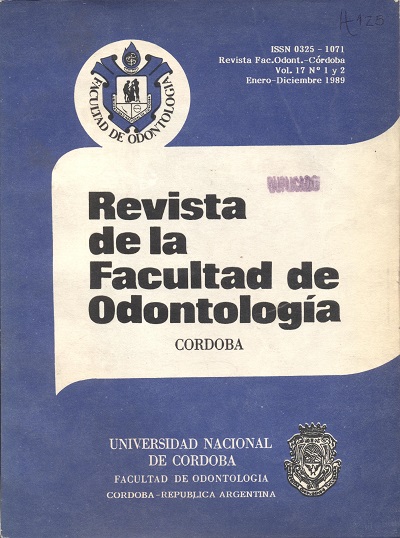Evolución embriológica del órgano lingual del pollo
Keywords:
Chick Embryo, Tongue, HistocytochemistryAbstract
Evolutionary. structural. ultrastructural anó cytochemical studies (PAS. alelan blue, toluidine blue. Ruthenium red] were performed in chick tongues 7to 19 days development. with the aim of observing the histomorphological changas during growth and difFerentiation. At 7 day; the tengue was covered by a Flat epithelium without cornification. With Four cell lines. As an axis was observad a central hyaline-cartilaginous skeleton surrounded by mesenchyma. Since 11 days appeared gland~ lar buds and canalizad cell cords united trough complexas. At 15 day; the epitelial thickness increased remarkably, The subepitelial connective tissue, already notably diFferentiated, formed papillae. Glandular acini contained PAS positiva. alcianophilic. metachromatic and positive ruthenium red substance. Ultrastructurally. glands showed clea-;:cells. with decreased electronic density and organoids randomly distri butedand dark cells having electrodense cytoplasm and more organizad oL: ganoids. At 19 days the epithelium was cornified in the tengue ante rior half,· A net increment oF glycoconjugates was detectad in glands These observations show: 1) lingual glands secrete mucíns since. 15 days of embryonic development;· 2) the cornified anterior epithelium is the result of a genetic pattern and not oF a later functional adapttion to the type oF feeding (grain eating birds].
Downloads
Published
Issue
Section
License
Aquellos autores/as que tengan publicaciones con esta revista, aceptan los términos siguientes:
- Los autores/as conservarán sus derechos de autor y garantizarán a la revista el derecho de primera publicación de su obra, el cuál estará simultáneamente sujeto a la Licencia de reconocimiento de Creative Commons que permite a terceros:
- Compartir — copiar y redistribuir el material en cualquier medio o formato
- La licenciante no puede revocar estas libertades en tanto usted siga los términos de la licencia
- Los autores/as podrán adoptar otros acuerdos de licencia no exclusiva de distribución de la versión de la obra publicada (p. ej.: depositarla en un archivo telemático institucional o publicarla en un volumen monográfico) siempre que se indique la publicación inicial en esta revista.
- Se permite y recomienda a los autores/as difundir su obra a través de Internet (p. ej.: en archivos telemáticos institucionales o en su página web) después del su publicación en la revista, lo cual puede producir intercambios interesantes y aumentar las citas de la obra publicada. (Véase El efecto del acceso abierto).

